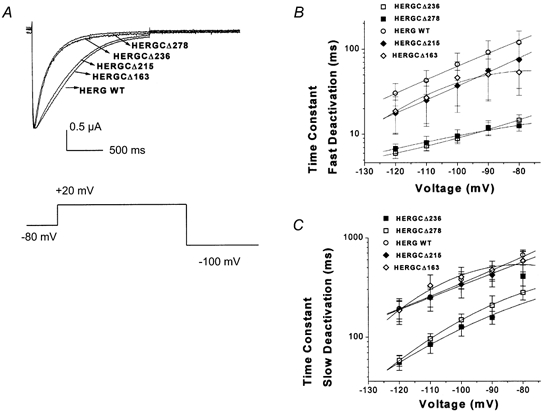Figure 3. Deactivation kinetics of HERG C-terminal deletion mutants.

A, deactivation traces recorded from HERG C-terminal deletion mutants, indicating that the two shortest mutants, HERGCΔ236 and HERGCΔ278, had significantly faster deactivation rates than those of WT channels. In this experiment cells were depolarized by activating channels from rest (-80 mV) with a 1 s pulse to +20 mV and measuring the closure of the channels during a range of pulses to 100 mV for 3 s. B, plot of fast deactivation time constants versus voltage for C-terminal deletion mutants (at −120 mV they were 30.4 ± 9 ms for WT, 18.8 ± 9 ms for HERGCΔ163, 17.8 ± 7 ms for HERGCΔ215, 6.01 ± 0.8 ms for HERGCΔ236 and 7 ± 2 ms HERGCΔ278. One-way ANOVA showed that the mean currents of HERGCΔ236 and HERGCΔ278 at each voltage were significantly different from WT at the 0.05 level (n = 13, P = 0.0008) whereas they were not significantly different for HERGCΔ163 and HERGCΔ215 (n = 13, P = 0.166). C, plot of slow deactivation time constants versus voltage for C-terminal deletion mutants. One-way ANOVA showed that the mean currents of HERGCΔ236 and HERGCΔ278 at each voltage were significantly different from WT at the 0.05 level (n = 13, P = 0.045) whereas they were not significantly different for HERGCΔ163 and HERGCΔ215 (n = 13, P = 0.93). Both time constants were significantly shorter at the 0.05 level in the deletion mutants (at −120 mV they were 192 ± 40 ms for WT, 188 ± 54 ms for HERGCΔ163, 185 ± 42.5 ms for HERGCΔ215, 58 ± 16 ms for HERGCΔ236 and 56 ± 9 ms for HERGCΔ278).
